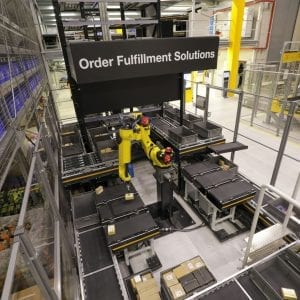
View original at www.supplychainbrain.com
Source: Bloomberg Only a year ago, the mere mention of a “virus” would have evoked in many people’s minds the image of a sick computer. Now, with the word having shed its metaphorical skin, and a literal virus posing a deadly threat to humans the world round, it’s robots to the rescue. That, at least, is how the world of e-commerce distribution views the current labor scene, when it comes to staffing up to handle consumer demand during the holiday shopping peak. On top of the usual need for extra hands is the requirement for strict social distancing in the workplace. (Assuming that employees are in the workplace at all.) With the coming of colder weather, fears of a second wave of COVID-19 have many warehouse operations wondering whether they can hire enough people to do the job. It’s more than a matter of finding workers to fill each position. According to inVia Robotics , a specialist in warehouse automation, companies hire an average of three times the amount of seasonal help they ostensibly need, to cover no-shows, sick days and, now, COVID-19 restrictions. There’s even a growing call for distribution expertise within retail stores, which are converting portions of their floor space into micro-fulfillment centers to handle orders received over the internet. Robots might hold the answer. Automation, of course, was well advanced in the warehouse world long before COVID-19 came along. The trend can be traced all the way back to the late 19 th century, with introduction of the conveyor belt. But today’s distribution robots are a different animal entirely, aping the actions and thought processes (if not actual thoughts) of humans. They can direct workers where to find multiple products for picking in the racks, then convey those items to the loading dock. Some do […]



Leave a Reply
You must be logged in to post a comment.